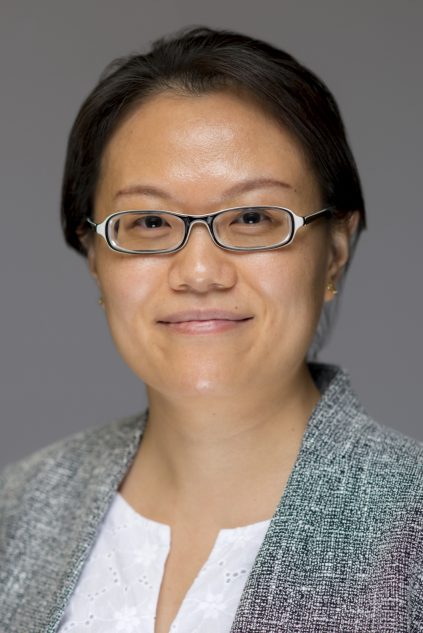Xiaojie Ji
Education
- B.S. Biotechnology, Central South University of Forestry and Technology, 2008
- M.S. Biomedical Engineering, Polytechnic Institute of New York University, 2011
Biosketch
People over 65 years of age are expected to account for ~20% of the total population in the US by year 2050. As people age, age-related diseases such as cancer, cardiovascular diseases, macular degeneration and neurodegenerative disorders are more likely to develop. These diseases not only seriously impact the quality of life of senior people but also bring huge financial burdens to both families and society. Among these diseases, age related macular degeneration (AMD) affects 1 in 3 individuals over the age of 77, but the causes and pathogenic mechanisms for AMD are not clear, which has retarded the development of effective drugs or therapies.
With strong interest in tackling the disease mechanisms of AMD, I joined Dr. Patsy Nishina’s lab at The Jackson Laboratory. I am studying the mechanisms underlying age-related retinal/macular degeneration and neurodegeneration for my Ph.D. dissertation. I appreciate the cooperative pre-doctoral training program of GSBSE and The Jackson Laboratory to offer me a unique platform to use variable mouse models to study the age-related diseases.
Research Interests
My thesis project focuses on the roles of a protein, named Lysosomal Trafficking Regulator (LYST), in vision. The health of photoreceptors, the light-sensing cells in the eye, depends on their interaction with a monolayer of supporting cells, retinal pigment epithelium (RPE). RPE cells are responsible for removal and digestion of the most distal part of a specialized cellular compartment of photoreceptors, called photoreceptor outer segment (POS), which is critical for vision. Because POS is continuously generated and shed at a very high rate, high-level activities of engulfment and digestion are required for RPE cells to degrade the internalized POS. Lysosomes serve as a major organelle for degradation of POS in RPE cells. Impaired lysosomal function has been linked to multiple vision-related diseases. For instance, age-related macular degeneration (AMD) is characterized by the accumulation of indigestible material within or juxtapose to RPE. I have utilized a novel mouse model, rpea2, to investigate the biogenesis and function of lysosomes and lysosome-related organelles in the RPE. My work will provide new insights on LYST and RPE function in retinopathies.
Selected Publications
- Spassieva SD*, Ji X*, Liu Y, Gable K, Bielawski J, Dunn TM, Bieberich E, Zhao L. (2016). Ectopic expression of ceramide synthase 2 in neurons suppresses neurodegeneration induced by ceramide synthase 1 deficiency. Proc Natl Acad Sci U S A 113(21):5928-5933. (*Co-first authors)
- Ji X*, Liu Y*, Hurd R, Wang J, Fitzmaurice B, Nishina PM, Chang B. (2016). Retinal Pigment Epithelium Atrophy 1 (rpea1): A New Mouse Model With Retinal Detachment Caused by a Disruption of Protein Kinase C, θ. Invest Ophthalmol Vis Sci 57(3):877-888. (*Co-first authors)
- Ji X, Chang B, Naggert JK, Nishina PM. (2016). Lysosomal Trafficking Regulator (LYST). Adv Exp Med Biol 854:745-750.
- Pushalkar S, Ji X, Li Y, Estilo C, Yegnanarayana R, Singh B, Li X, Saxena D. (2012). Comparison of oral microbiota in tumor and non-tumor tissues of patients with oral squamous cell carcinoma. BMC Microbiol 12: 144.
- Ji X, Pushalkar S, Li Y, Glickman R, Fleisher K, Saxena D. (2012). Antibiotic effects on bacterial profile in osteonecrosis of the jaw. Oral Dis 18(1): 85-95.
- Pushalkar S, Mane SP, Ji X, Li Y, Evans C, Crasta OR, Morse D, Meagher R, Singh A, Saxena D. (2011). Microbial diversity in saliva of oral squamous cell carcinoma. FEMS Immunol Med Microbiol 61(3): 269-277.
*Co-first authors

